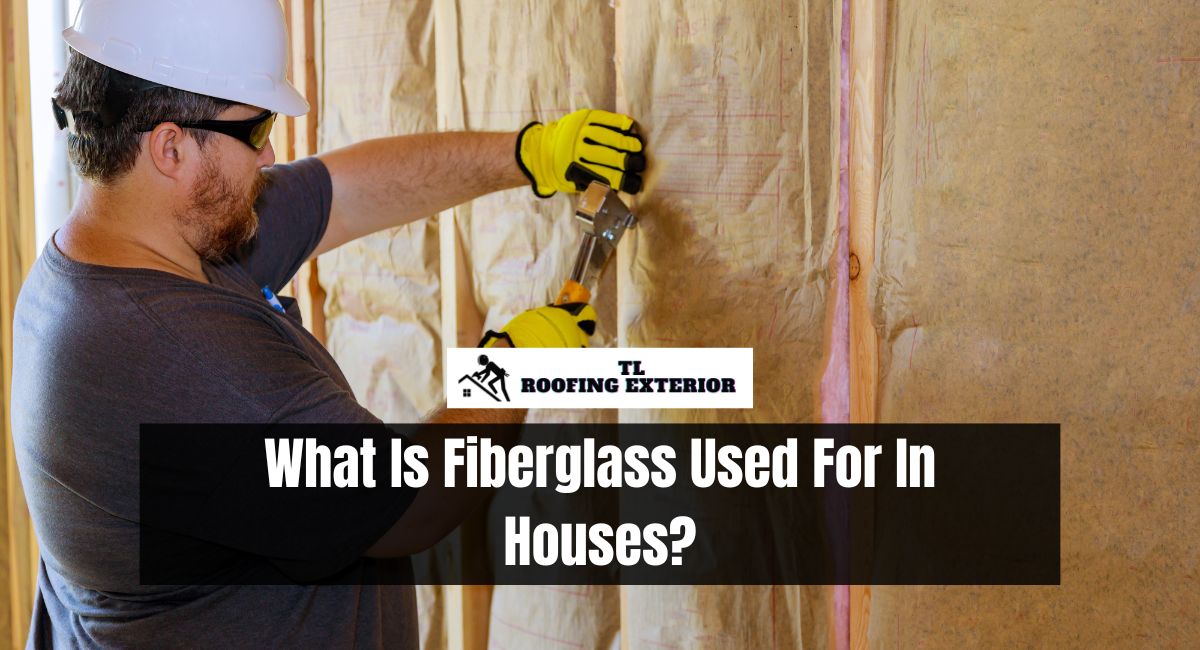Fiberglass is an adaptable material that has numerous applications in contemporary residences. Fiberglass is commonly associated with insulation due to its lightweight and durability, but its applications extend far beyond that. So, what is fiberglass used for in houses?
Fiberglass has become an integral component of residential construction, from windows and doors to roofing and utilities.
In this article, we will discuss the various applications of fiberglass in residential construction, including its benefits, limitations, and why it has become the material of choice for so many householders and builders.
What Is Fiberglass Used For In Houses?
Fiberglass is a versatile material that is commonly used in various applications within residential construction and home improvement. Here are some of the primary uses of fiberglass in houses:
1. Insulation
- Batt Insulation: One of the most common uses of fiberglass is as batt or roll insulation, typically installed between wall studs, floor joists, and roof rafters.
- Blown-In Insulation: Fiberglass can also be used as loose-fill insulation, which is blown into attics, walls, or floor cavities.
2. Windows
- Fiberglass Frames: Fiberglass window frames offer excellent thermal performance and are resistant to warping, rotting, and corrosion.
3. Doors
- Fiberglass Doors: These doors mimic the look of wood but offer better insulation and require less maintenance.
4. Roofing
- Shingles: Fiberglass is used in the construction of certain types of asphalt shingles, providing a base layer that is coated with asphalt and granules.
5. Plumbing
- Pipes and Tanks: Fiberglass-reinforced plastic (FRP) is used for water storage tanks and certain types of plumbing pipes, especially for corrosive or high-temperature fluids.
6. Flooring
- Underlayment: Fiberglass is sometimes used as a backing material for various types of flooring, including vinyl and carpet.
7. Wall Coverings
- Wallpaper Backing: Some types of wallpaper use fiberglass as a backing material for added durability.
- Reinforcement: Fiberglass mesh can be used to reinforce walls and ceilings, especially in wet areas like bathrooms.
8. HVAC Systems
- Air Filters: Fiberglass is commonly used in disposable air filters within HVAC systems.
9. Soundproofing
- Acoustic Insulation: Fiberglass panels can be used for soundproofing rooms, as the material is effective at absorbing sound.
10. Exterior Cladding
- Fiberglass Siding: Though less common than vinyl or wood, fiberglass can be used as an exterior siding material.
11. Other Uses
- Shower and Bath Enclosures: Fiberglass is often used to create prefabricated shower and bath units.
- Garage Doors: Some garage doors are made from fiberglass for its lightweight and insulating properties.
Advantages of Fiberglass in Houses
- Insulating Properties: Fiberglass is an excellent insulator, helping to keep homes warm in winter and cool in summer.
- Durability: It is resistant to corrosion, rot, and pests.
- Low Maintenance: Requires little maintenance compared to materials like wood.
- Cost-Effectiveness: Generally more affordable than other materials like metal or wood for similar applications.
By understanding the various applications of fiberglass in residential construction, you can make informed decisions about its use in your own home.
What Are The Most Common Uses Of Fiberglass?
The most common application of fiberglass in residential construction is as insulation, providing thermal and acoustic barriers in walls, attics, and crawl spaces. Additionally, it is utilized in window frames as a durable, corrosion-resistant material that provides superior insulation to aluminum. In bathrooms and kitchens, fiberglass reinforced panels (FRP) are used for moisture-resistant walls.
Additionally, roofing shingles made from fiberglass offer a lightweight and fire-resistant option. Some contemporary residences even have doors made of fiberglass for increased insulation and security. Its adaptability makes it a popular material for numerous home construction and renovation applications.
Is Fiberglass Used In Walls?
Yes, fiberglass insulation is commonly used in walls. Batts or coils of fiberglass insulation are installed between wall studs to create thermal and acoustic barriers.
This contributes to the maintenance of indoor temperatures and the reduction of energy costs. It is a popular option due to its affordability, installation simplicity, and effective insulating properties.
However, proper installation is essential to prevent gaps that could compromise its efficacy. Some walls may also be constructed with fiberglass-reinforced panels (FRP) for increased durability and moisture resistance.
Conclusion
Fiberglass is a versatile material that combines durability, insulation, and cost-effectiveness, making it a popular choice for a variety of home construction applications.
Fiberglass provides a variety of benefits that enhance the functionality and durability of a home, such as thermal insulation in walls and attics, reinforced plastic pipelines for plumbing, and corrosion-resistant doors and windows.
Read More: Why Is A Metal Roof Better Than Shingles?
